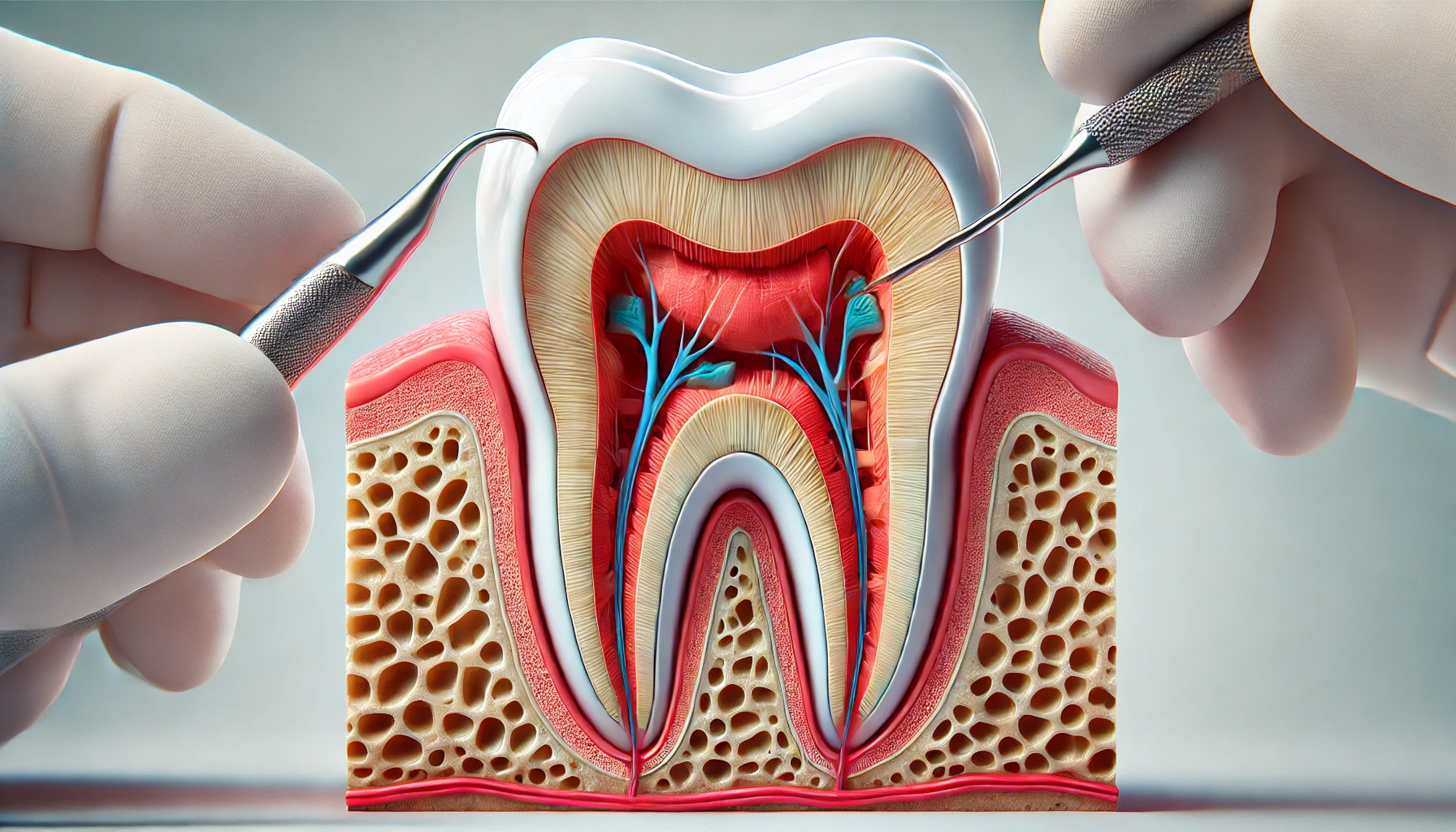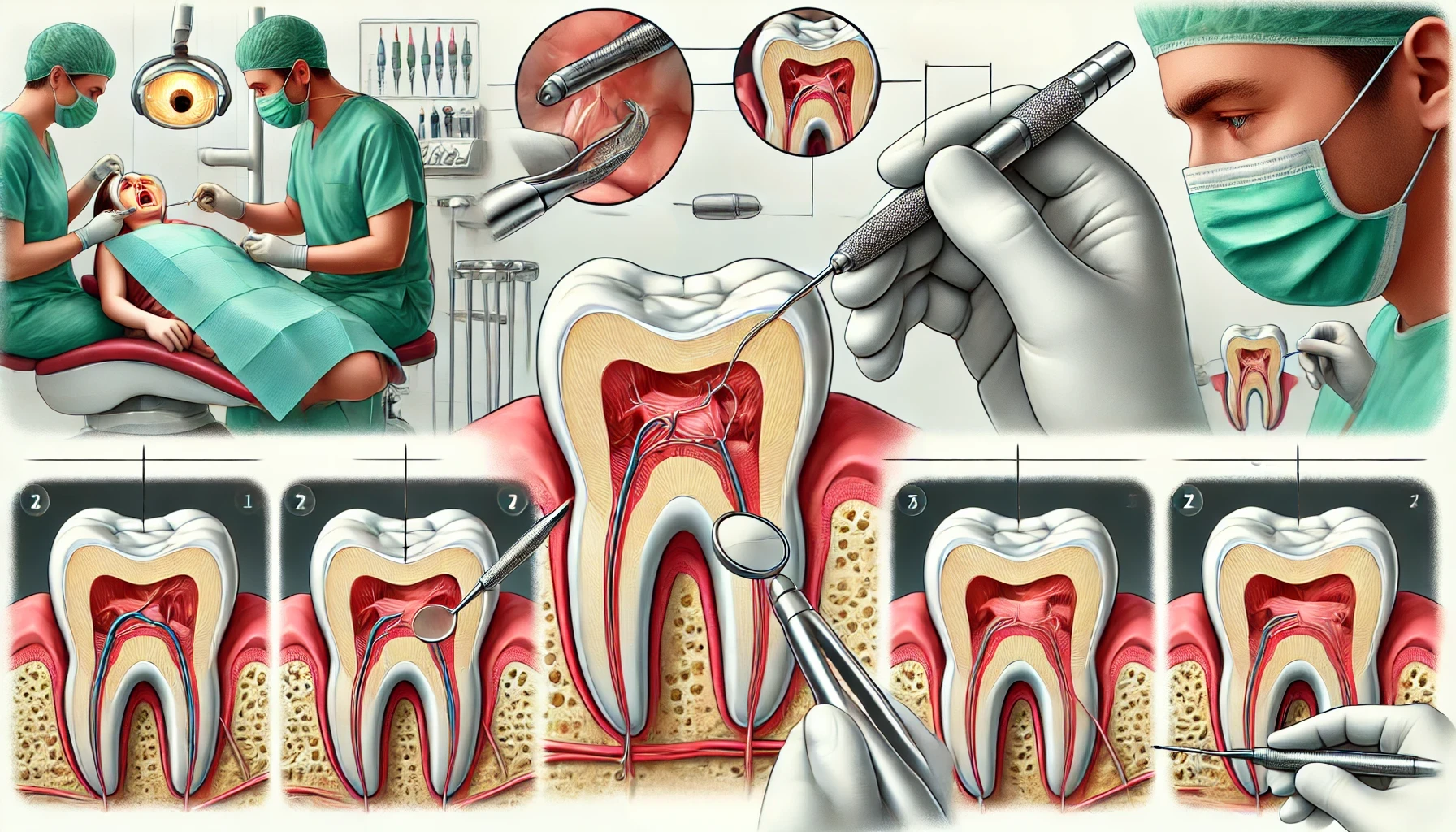Root canal treatment is a dental procedure designed to save a tooth that has been damaged by decay or infection. When the inner pulp of the tooth becomes infected, it can cause severe pain and lead to further complications.
Root canal therapy is performed to remove the infected pulp, clean the root canals, and seal the tooth, preventing further damage. This article will cover everything you need to know about root canal treatment, its process, and how it can save your smile.
What is a root canal and why is it necessary?
A root canal is a dental procedure that becomes necessary when the soft tissue inside the tooth, known as the pulp, becomes inflamed or infected. This can occur due to deep decay, repeated dental procedures on a tooth, or a crack or chip in the tooth.
Infections can lead to severe pain, swelling, and even abscesses if left untreated. During the procedure, a dentist or endodontist removes the damaged pulp, cleans and disinfects the canal within the root, and seals it with a biocompatible material.
By addressing the infection, root canal treatment helps alleviate pain, prevent further issues, and, most importantly, saves the natural tooth. Retaining your natural teeth ensures optimal function and esthetics, preserving your ability to chew effectively and maintain a natural appearance.
The root canal procedure: Step-by-step
Root canal treatment typically takes place over the course of one or two appointments. Here is a step-by-step breakdown of what to expect during the procedure:
- Initial consultation: Your dentist will examine your tooth and take X-rays to determine if a root canal is necessary.
- Anesthesia: Before the procedure, you will receive local anesthesia to numb the affected tooth and surrounding area.
- Pulpectomy: The dentist or endodontist will create an opening in the top of the tooth, allowing access to the infected pulp. They will then remove the damaged tissue from within the canals using specialized tools.
- Cleaning and shaping: Once the pulp is removed, the canals are cleaned and shaped with small files to prepare them for filling.
- Filling: A rubber-like material called gutta-percha is used to fill and seal the now-empty root canals.
- Temporary filling: In some cases, a temporary filling may be placed to protect the tooth until the final restoration is completed.
- Final restoration: A crown or filling will be placed on top of the tooth to provide strength and protection, depending on the condition of your natural tooth.
- Follow-up: After the procedure, you may experience some discomfort, which can usually be managed with over-the-counter pain medication. You will also need to schedule a follow-up appointment to make sure the infection has been fully resolved.
How to care for your teeth after a root canal
Caring for your teeth after a root canal is crucial for ensuring successful healing and preventing further issues.
First, avoid chewing on the treated tooth until a permanent restoration is placed. Excellent oral hygiene is essential—brush twice daily and floss regularly to keep your mouth clean. Use an antibacterial mouthwash to reduce bacteria and help prevent infection.
Attend all follow-up appointments to monitor healing and complete necessary restorations, such as a crown, for added protection. If you experience any swelling, pain, or discomfort, contact your dentist promptly, as these could signify complications.
Additionally, maintain regular dental check-ups to ensure overall oral health and to catch any potential problems early. Following these steps will help preserve the longevity and function of your treated tooth.
Root canal cost and financing options
The cost of a root canal treatment can vary depending on the severity of infection and the tooth’s location. However, in general, root canal therapy is less expensive than having a tooth extracted and replaced with an implant or bridge.
Many dental insurance plans cover a significant portion of the cost for root canal treatment. Be sure to check with your provider to determine your coverage and any out-of-pocket expenses.
If you do not have dental insurance, there are still options available to help finance your procedure. Many dentists offer payment plans or accept third-party financing. It’s important to discuss these options with your dentist before scheduling the procedure.
Here’s everything you need to know about root canal treatment:
- Removes infection and saves the tooth: Root canal treatment is performed to remove the infected pulp and save the natural tooth.
- Relieves pain: The procedure addresses the source of your discomfort by treating the infection deep inside the tooth.
- Cleans and seals the tooth: After removing the infected pulp, the dentist cleans the root canals and seals the tooth to prevent future issues.
- Preserves natural function: By saving your natural tooth, root canal therapy allows you to maintain normal chewing and biting function.
- Reduces the need for extraction: Root canal therapy is used as an alternative to tooth extraction, helping you to avoid the complications of losing a tooth.
Summary
Root canal treatment is a crucial procedure for saving teeth that have been damaged by severe decay or infection. By removing the infected pulp, cleaning the root canals, and sealing the tooth, this treatment preserves the natural tooth and restores oral health. Understanding the process and following proper aftercare ensures a successful recovery and long-lasting results.
Questions and Answers
What is a root canal treatment?
Root canal treatment is a dental procedure designed to remove infected pulp from the inside of the tooth and seal the root canals to prevent further damage.
When is a root canal necessary?
A root canal is necessary when the infection or decay reaches the inner pulp of the tooth, causing pain and potential abscesses.
What causes the need for a root canal?
Deep decay, repeated dental procedures on the tooth, or trauma to the tooth can cause the pulp to become infected or inflamed.
How is root canal treatment performed?
The dentist will remove the infected or damaged pulp, clean the inside of the tooth, and seal the root canals to prevent future infection.
Is root canal treatment painful?
The procedure is performed under local anesthesia, so it is relatively pain-free. You may experience some discomfort after the procedure, but this is typically mild.
What happens if I don’t get a root canal when needed?
If left untreated, the infection can spread, leading to an abscess or the need for tooth extraction.
How long does it take to recover from a root canal?
Most people recover from root canal treatment in a few days. Following proper aftercare, such as taking prescribed medications and avoiding chewing on the treated tooth, aids recovery.
Will my tooth need a crown after a root canal?
In many cases, a crown is used to protect the tooth after root canal therapy, especially if the tooth has lost a significant portion of its structure.
Can the tooth still become infected after a root canal?
While the risk is low, if the tooth wasn’t sealed properly or becomes damaged, it’s possible for the infection to return. Regular check-ups help prevent this.
How do I care for my tooth after a root canal?
Brush and floss as usual, avoid chewing on the affected side until fully healed, and follow any specific instructions from your dentist to ensure a smooth recovery.







